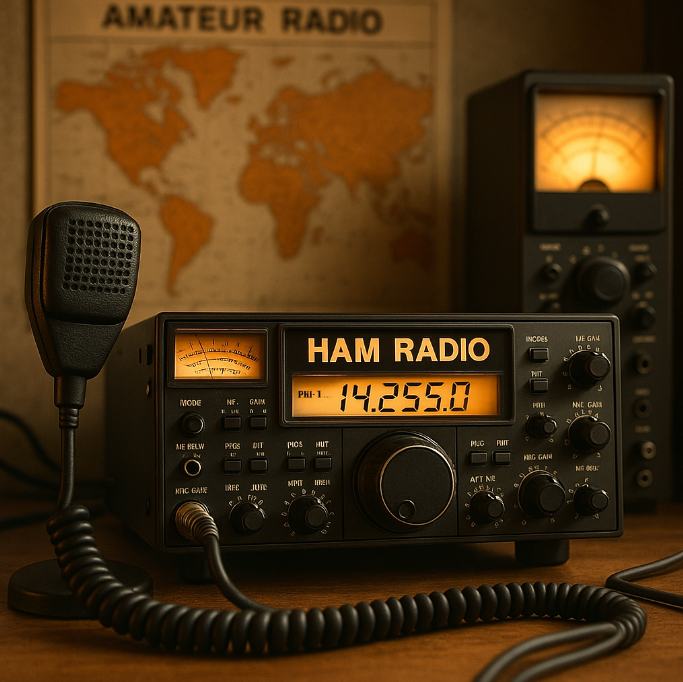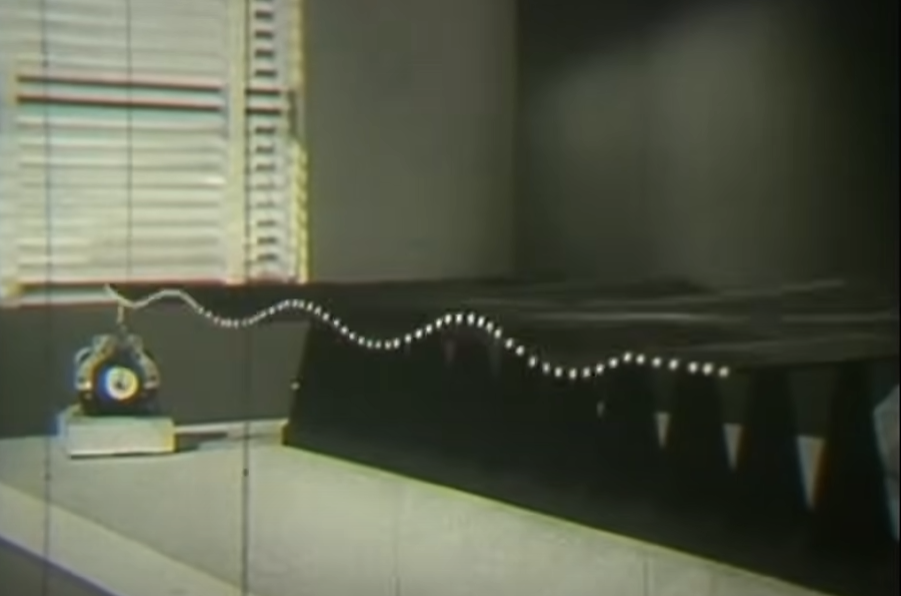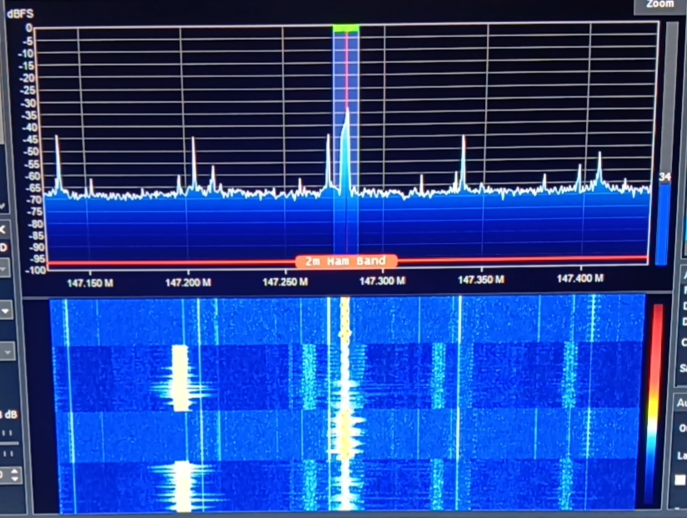A Journey Into Radio

Written by Nicholas Howland, 2025/06/08
DISCLAIMER: I do not know why GPT decided that the best frequency to put this radio on was an out of band one. Radio is one of those things that you really should just stick to the public bands for listening :) here is a funny forum thread about that particular frequency https://forums.radioreference.com/threads/142-550-mhz-ralieigh-area.43379/
I am a long time lover of the radio, there is something magical about tuning into a medium that is all around us and independent of the centralized internet infrastructure and a welcome break from the marketing found on social media. For the past month I have been working on getting a HAM radio license for a club weather balloon project. If you are not familiar with HAM radio its a hobby license that allows you to send and receive transmissions from other HAM radio operators, that could be a real time voice message or a real time text message that is typed out and transmitted with the assistance of some computer software and Morris Code transmission, yes people still do that! HAM radio operators aka HAMs are allowed transmission privileges on the HF, VHF and UHF bands. Bands refer to a wavelength defined by the American Radio Relay League (ARRL) and a handy little pdf can be found here https://www.arrl.org/files/file/Regulatory/Band%20Chart/Hambands4_Color_17x11.pdf.
Anyone can listen into the HAM bands but in order to transmit you have to have a license. To get a license you have to study radio a test on radio properties and some commonly accepted conventions and then you are assigned a callsign and allowed to transmit on a specific set of frequencies measured in Megahertz. Note that in the case of an immediate threat to life or limb anyone can transmit a distress call using HAM radio.
Side-Note: There are some concerns with people with certain ideologies broadcasting their message over the shortwaves, which I am sure that there is some of that going around, but in the last couple of years tuning around I have not heard any of that kind of stuff on the HAM bands. Mostly its just people having fun with radios, talking about rigs, and trying to connect with others in a space where commercial use is banned, including marketing, because of its detriment to the airwaves https://www.ecfr.gov/current/title-47/chapter-I/subchapter-D/part-97.
Radios That Don't Require a License.
If you just want to talk to a local community there is always Citizen Band (CB) radio, the things you see being used by truckers, which does not require a license but the power you are allowed to transmit your voice with is restricted, there are only a few channels, and the high frequency does not allow for long distance transmissions.
If you are interested in mesh networks that allow for backbone independent systems such as LoRa, which I learned about recently, it is a different beast. LoRa uses the lower frequencies of the ISM band 915 MHz in the United States. The beauty of the Industrial, Scientific, and Medical (ISM) band is that it does not require a license to transmit and receive. This is the FCC carve out that allows anyone to set up a router in their home, companies to develop medical devices that can communicate over long distances, and random IoT cat toys.
Briefly How Radio Works
All you really need to start listening is a SDR and some open source software or a simple shortwave radio. I use RTL-SDR and some open source software on a old junker computer to listen in on bands and it has seemed to work pretty well. The most popular bands among HAM radio operators transmitting voice is the 2 meter band (144-148 MHz). 2 meters relates to the actual length from the relative minimum to the relative maximum wave. Frequency modulation is a technique that uses the frequency, or number of times, the wave orcelites per second, where as AM or amplitude modulation is a method that uses the strength or power of the signal sent. Each modulation technique has its benefits. AM is primarily used in shortwave radio because it is lower quality because it is easier to set up and can travel longer distances where as FM travels less far but has a better signal quality and requires special broadcasting equipment.
There are also data sending capabilities that are possible over short wave, but they are prone to signal loss and interference which makes them undesirable for commercial products. There is the APRS which stands for the Automatic Packet Reporting System which is used to share real time location, weather data, and even messages over long distances. Note that the high error rate and low data rate on some of the lower bands can cause issues with compression and encryption although it is possible. The FCC also restricts the use of a HAM radio operator license for selling or promoting products and restricts the use of a HAM radio license in commercial with a few carve outs.
Propagation
 A really good video to help visualize how waves work and get a good idea of what Standing Wave Ratios are and how waves move through space is this one: https://youtu.be/DovunOxlY1k&t=82.
A really good video to help visualize how waves work and get a good idea of what Standing Wave Ratios are and how waves move through space is this one: https://youtu.be/DovunOxlY1k&t=82.
Propagation is a property of a wave as it travels through space and can be used to describe bounce and absorption. A really cool thing that the short wave bands can do when they travel through the ionosphere is that they will actually bend along the curvature of the earth allowing for further than line of sight propagation. There is a science as well as an art to the propagation of radio waves over long distances called DXing or Distance Connecting. There are a number of weather events that can affect the signals, on some bands precipitation and humidity can affect propagation and on others not so much, but the most interesting weather event that can affect signal propagation is the Aurora Borealis.
The Aurora Borealis can affect long distance, short wave, radio signals in unexpected ways. It can cause distortion in broadcasts as well as absorbing transmissions that would normally be reflected by the ionosphere to expectable coverage areas. It can also cause irregular reflection areas on earth from reflected transmissions. It does not affect 2.4/5Ghz WiFi because it has a much lower range and expected reception distance. But in essence its like a fun house mirror for radio waves that make it into the ionosphere!
Reasons to get Into HAM
I got into shortwave radio a while back after getting a RTL-SDR receiver because I wanted a high quality low cost way to listen to local radio channels and to see what radio waves look like. The idea of being able to connect over hundreds of miles and even contacting the International Space Station, yup you can do that too. Like I said at the beginning there is something really cool about connecting with others in the area or across the country with nothing but a little black box. Its also a good way to stay in contact and get news and information from others in the community in the case of an emergency. Also radio signal waterfalls look super neat

ARRL and HAM licensed radio operators have provided services on a volunteer basis in the event of disasters providing tactical communications for emergency responders and reporting critical information using their equipment. I got into cybersecurity because I wanted to volunteer my time and energy helping mitigate threats and share things I learn with a community. The HAM radio community has a long standing reputation for providing critical communication services through volunteer organizations such as Radio Amateur Civil Emergency Service (RACES) and Amateur Radio Emergency Service (ARES)
Conclusion and TLDR
- If you are interested in data transmissions I would look more into LoRa as a suitable technology.
- Radio as an art and technical discipline can be fun and rewarding but can be time and pocketbook costly.
- HAM radio became popular amongst volunteers and people who want to be of service in disasters, please be sure to go through the proper channels so that you don't end up causing more harm than help.
- Radio is way different than the internet, which has its upsides of being able to have static resources, and relies on time based messaging.
Some Things I didn't Touch on
There are nodes in radio networks called repeaters that will relay transmissions from one to another and allow for longer distance communications. There are also nodes that connect directly to the internet that you can tune into different peoples radios over the internet which is a good way to get a feel for the waterfall without investing time and money into getting your own receivers. Antennas, Antennas Antennas.
Resources
Part 97 of the FCC regulations regarding the use of the HAM Bands https://www.ecfr.gov/current/title-47/chapter-I/subchapter-D/part-97
The Amateur Radio League homepage where you can find all kinds of useful resources for getting into HAM Radio or passing your exam https://www.arrl.org/home
Map of active radios that you can listen in on: http://rx.linkfanel.net/ (my antivirus pings on this one so you may want to proceed with caution)
Another place to listen to radio online by station names: http://websdr.org/
The place to go to look up frequencies and forum posts by radio operators: https://www.radioreference.com/